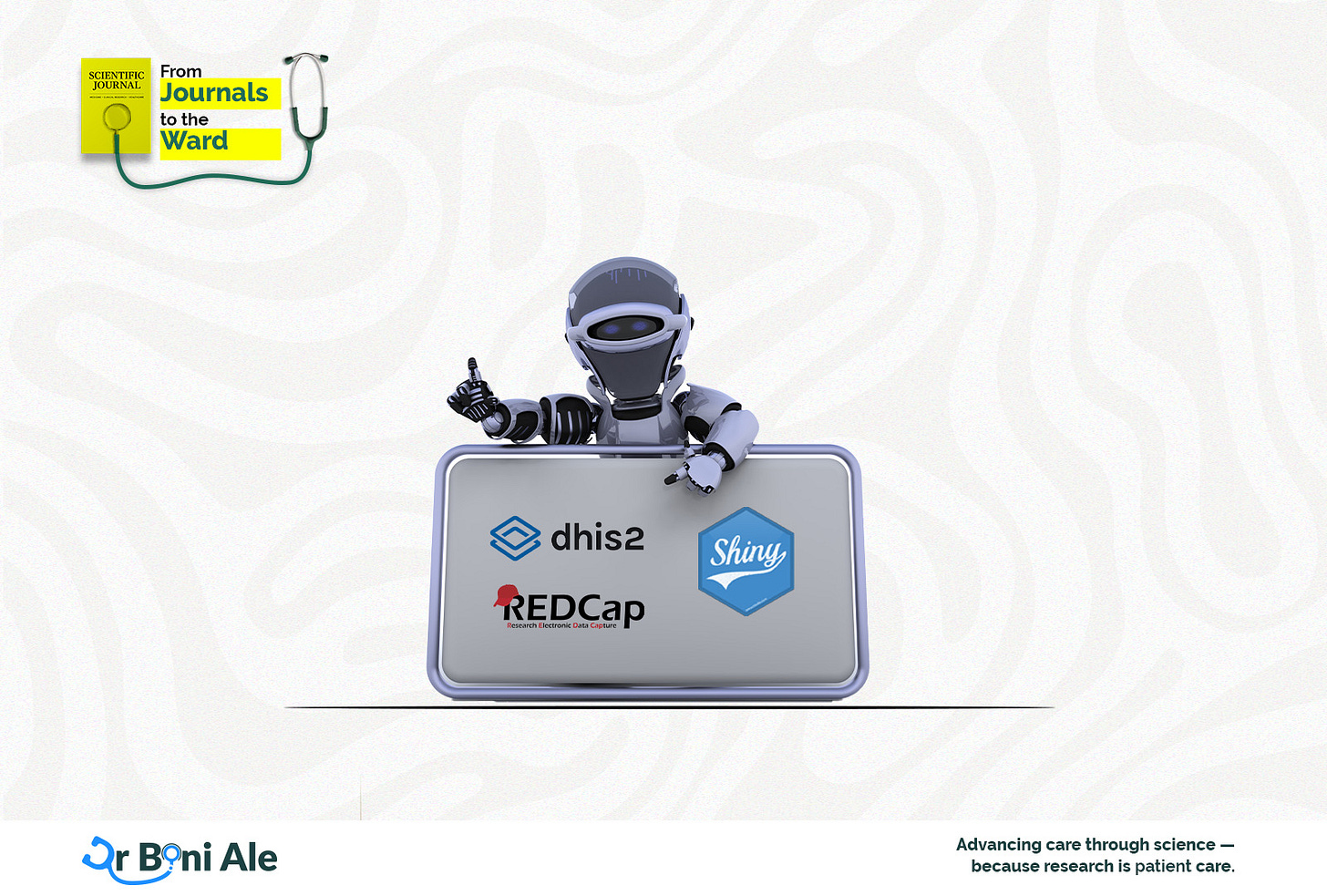Digital Tools That Help Bridge the Gap
How REDCap and RShiny Support Smarter, Faster, and Friendlier Implementation
In global health, we often say we’re “bridging the gap between evidence and practice.” But let’s be honest—sometimes it feels more like building a rope bridge during a storm, with one hand tied behind your back, and a printer error flashing in the corner. That’s where digital tools come in—not as magic wands, but as practical scaffolds that help make research usable, timely, and trusted.
This week, I want to spotlight two such tools: REDCap and RShiny. Think of them as the quiet champions in the background, quietly organizing chaos and turning spreadsheets into strategy.
REDCap: The Backbone of Consistent, Clean Data
If research begins with data collection, REDCap is the first (and often overlooked) line of defense against disaster. Designed for secure, structured, and flexible data capture, it’s like having a digital assistant who never sleeps, doesn’t skip fields, and always knows which question to ask next.
In Nigeria’s HTN Program, which spanned 32 primary health centers, REDCap was our digital registry for hypertension care. The platform helped us build tailored forms, implement validation checks, and standardize patient monitoring—even in sites where internet connectivity was patchy at best. The results? Fewer errors, faster reporting, and more confident clinicians who could finally trust the numbers in front of them.
Lesson: Good implementation starts with clean, reliable data—and REDCap gets you there.
RShiny: Turning Raw Data Into Real-Time Insight
Once your data is in order, the next step is making it useful—and usable. RShiny, built on the R programming language, helps researchers and program teams create interactive dashboards that transform static datasets into dynamic decision-making tools.
In the MUTIMA study across Uganda and South Africa, we used RShiny to visualize key cardiovascular outcomes in women living with HIV. These dashboards let local teams drill down by clinic, biomarker, or treatment regimen—often uncovering insights that prompted protocol deviations within days, not months. Program managers were no longer guessing; they were responding.
Lesson: Insight isn’t just about data volume—it’s about how clearly and quickly you can see the story.
The Real Power of These Tools
REDCap and RShiny are not miracle workers. They won’t write your analysis plan or convince policymakers to act. But they do make the process smoother, more transparent, and more collaborative.
In resource-limited settings, that’s powerful. These tools level the playing field—enabling local teams to build high-quality systems without high-cost infrastructure. And when used together, they create a feedback loop where data drives action, and action improves care.
A Note on Humor and Humanity
Digital tools can sound dry, but their impact is deeply human. They help frontline nurses flag risks before they become emergencies. They let program managers adjust course without waiting for quarterly reports. They save time—and sometimes, they help save lives.
In summary
Technology doesn’t replace judgment. It supports it. And in the right hands, REDCap and RShiny help research do what it was always meant to do: make a difference.
Next Up: Beyond Citations: How Do We Measure Real Impact?
Because research success isn’t just about how many times your paper is cited. It’s about whether it led to a policy shift, improved patient outcomes, or changed how care is delivered. In next week’s post, I’ll explore better ways to define and measure real-world impact.





